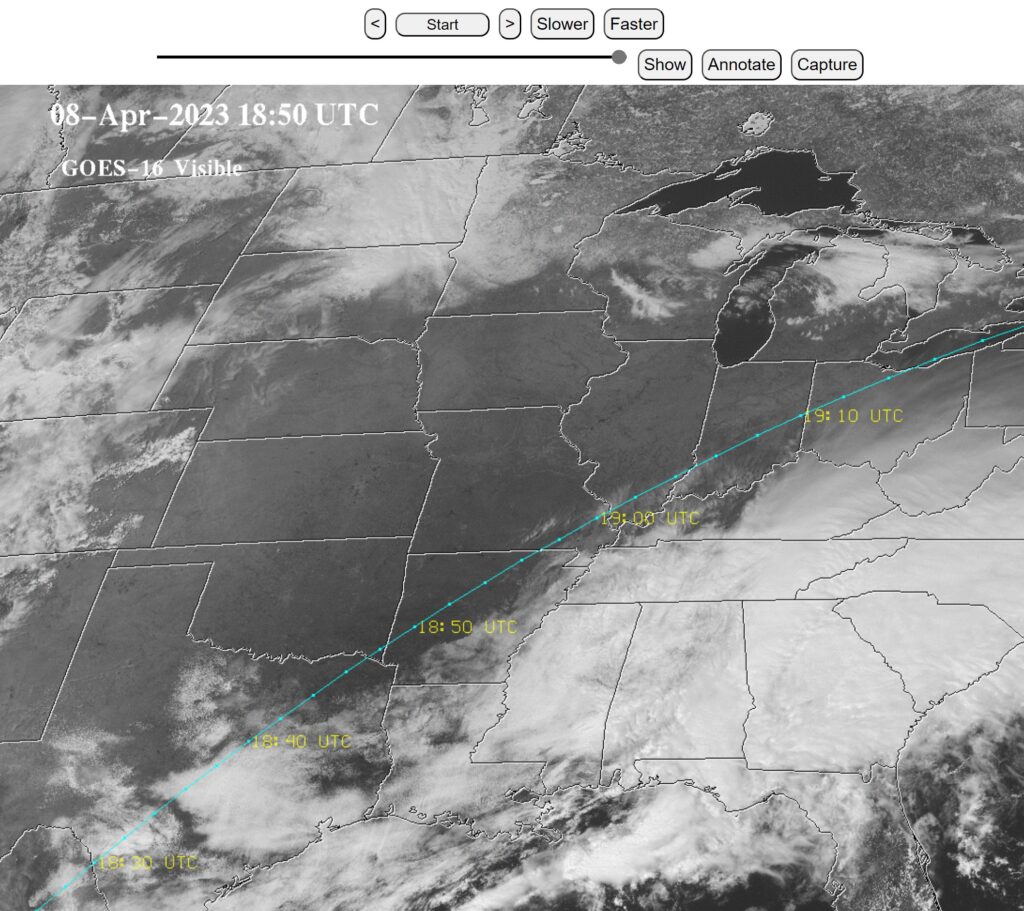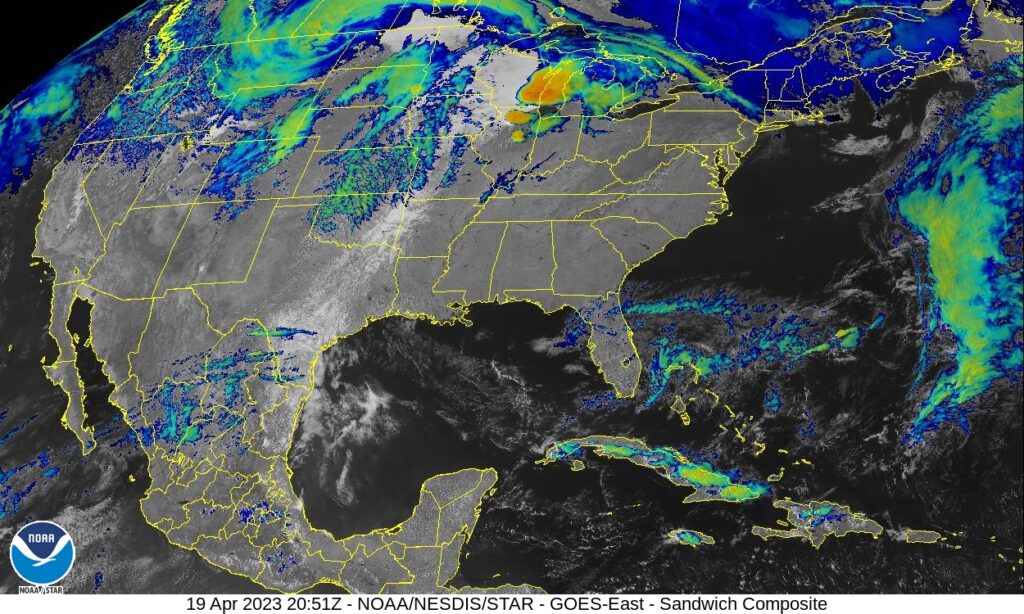Will it be Cloudy on April 8th (2024)?
Due to the total solar eclipse over parts of the contiguous U.S. on April 8, 2024, there are many wondering what the cloud cover may be then.
Q: Will it be cloudy over the path of the total solar eclipse on April 8, 2024?
A: We don’t know what the cloud cover will be on April 8th, 2024. To offer a clue, we can look to the past. The animation below is a geostationary visible image from April 8 over the last few decades. One image (~19 UTC) is shown for each day. The satellites include: SMS-1, GOES-3, SMS-2, GOES-5, GOES-6, GOES-7, GOES-8, GOES-12, GOES-13 and GOES-16 (here is a timeline of the U.S. geo imagers). The loop below (animated gif and mp4) is also available as an animated gif and mp4 with a quicker playback speed. The expected eclipse path is over-plotted. In addition, here is an interactive path plot page.
Also see this interactive web page, where the speed of the loop can be changed, the image annotated, etc.

Another option is this cloud climatology by Brian Brettschneider:
Another cloud climatology, but from GOES.
Q: Will the NWS Weather Prediction Models include the total eclipse in their cloud forecasts?
A: We don’t know, but in 2017 certain experimental models did. Of course the cooling associated with the eclipse shadow can cause local changes to temperature, wind, cloud cover and other parameters.
Q: Is there a NOAA-operated sensor to provide rapid updates of cloud cover over the US?
A: Yes, there is a GOES constellation. There are many web sites (including the GOES Viewer) and phone apps to see realtime imagery.

Q: Isn’t there another solar eclipse coming up over the western U.S?
A: Yes, on October 14, 2023. Although that’s an annular (“ring“) eclipse, not a total eclipse. More, including the path.
Q: What might the moon’s shadow look like cast on the Earth during a total solar eclipse?
A: We have a good idea, based on previous cases from geostationary imagers, for example from 2017. Or see these other examples: 2019, 2020, 2020, 2021 and 2023 (2023).
Q: Can the cooling associated with a total solar eclipse affect the cloud patterns?
A: Yes it can, especially for “fair weather” cumulus. We saw from GOES the dissipation of certain clouds during the 2017 event (near St. Louis, MO).
Q: Should I look at the Sun without proper eye protection?
A: No.
Q: Is 99% close enough to experience the total eclipse?
A: No. Try to get into the region of totality.
H/T
These images were made using NASA and NOAA geostationary visible imagery with McIDAS-X software, from UW-Madison, SSEC. The images are via the SSEC Data Services. Thanks to Jim Nelson, Mat Gunshor, Scott Bachmeier and many others, including Kaba Bah. Thanks to Tom Whittaker for the java-script webapp (interactive web page). Thanks also for the Eclipse Predictions by Fred Espenak, NASA’s GSFC.

